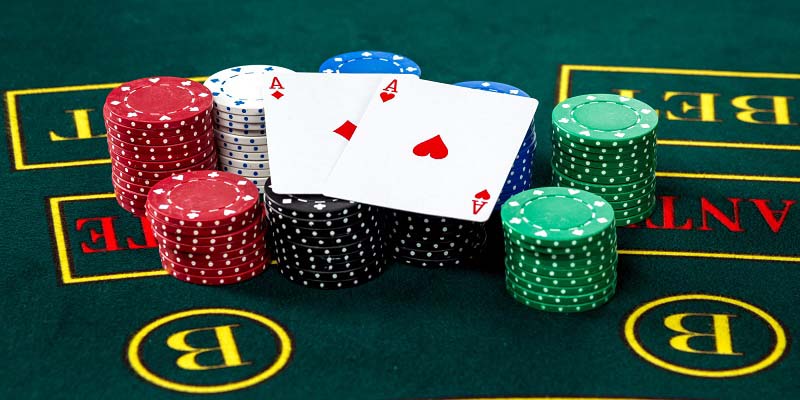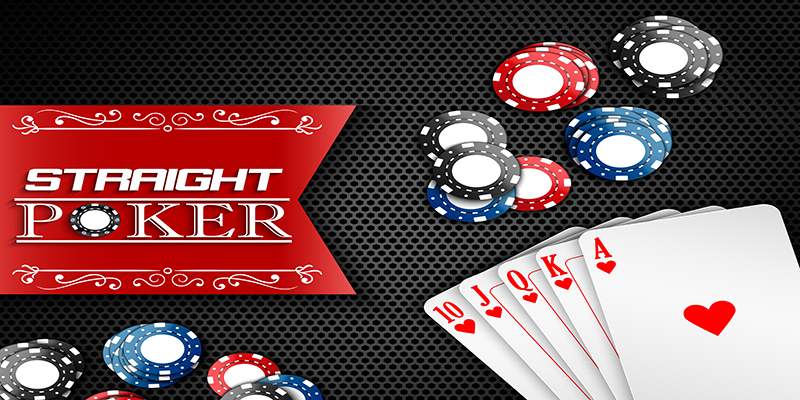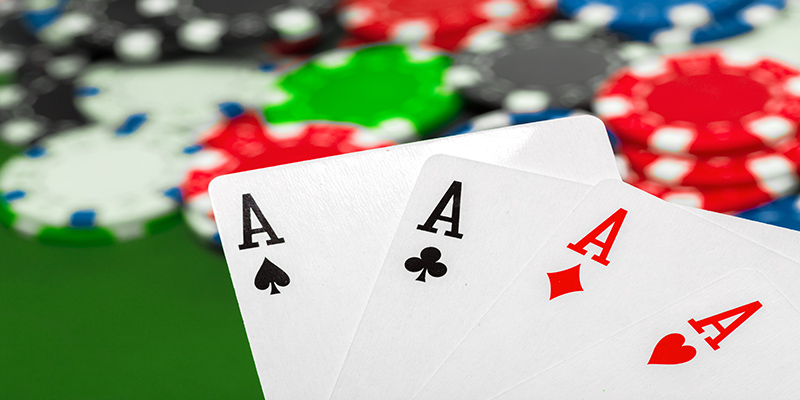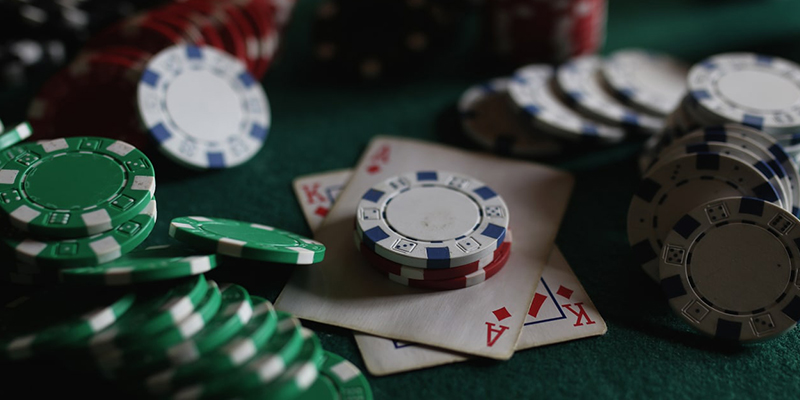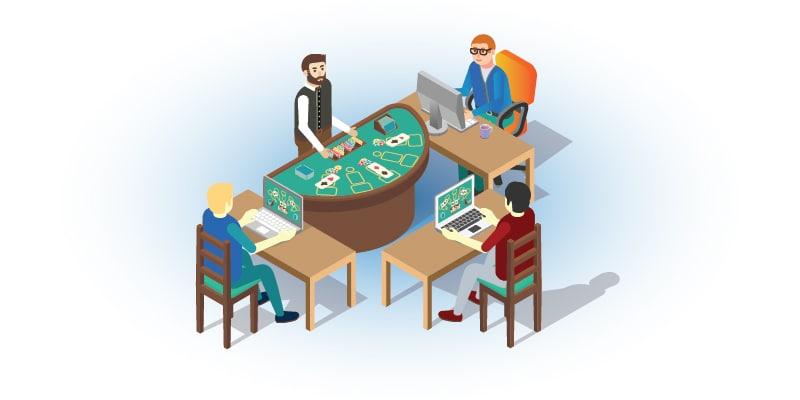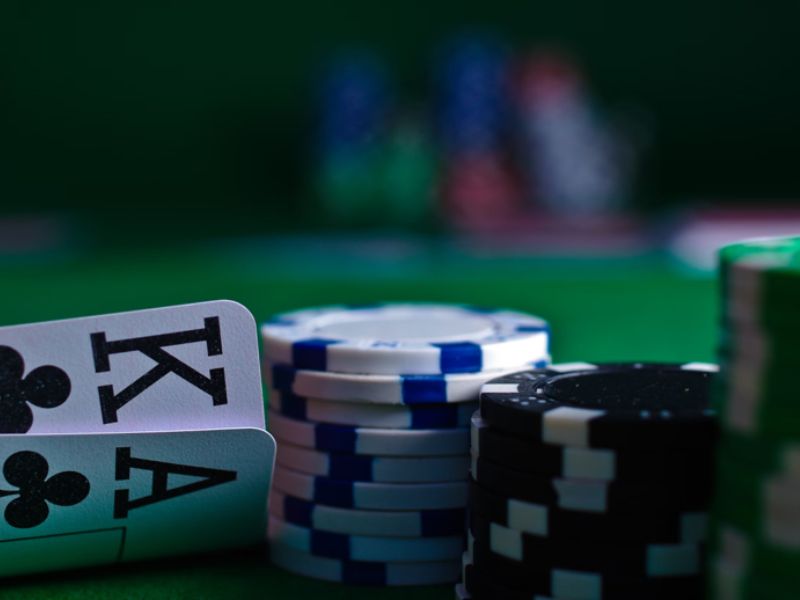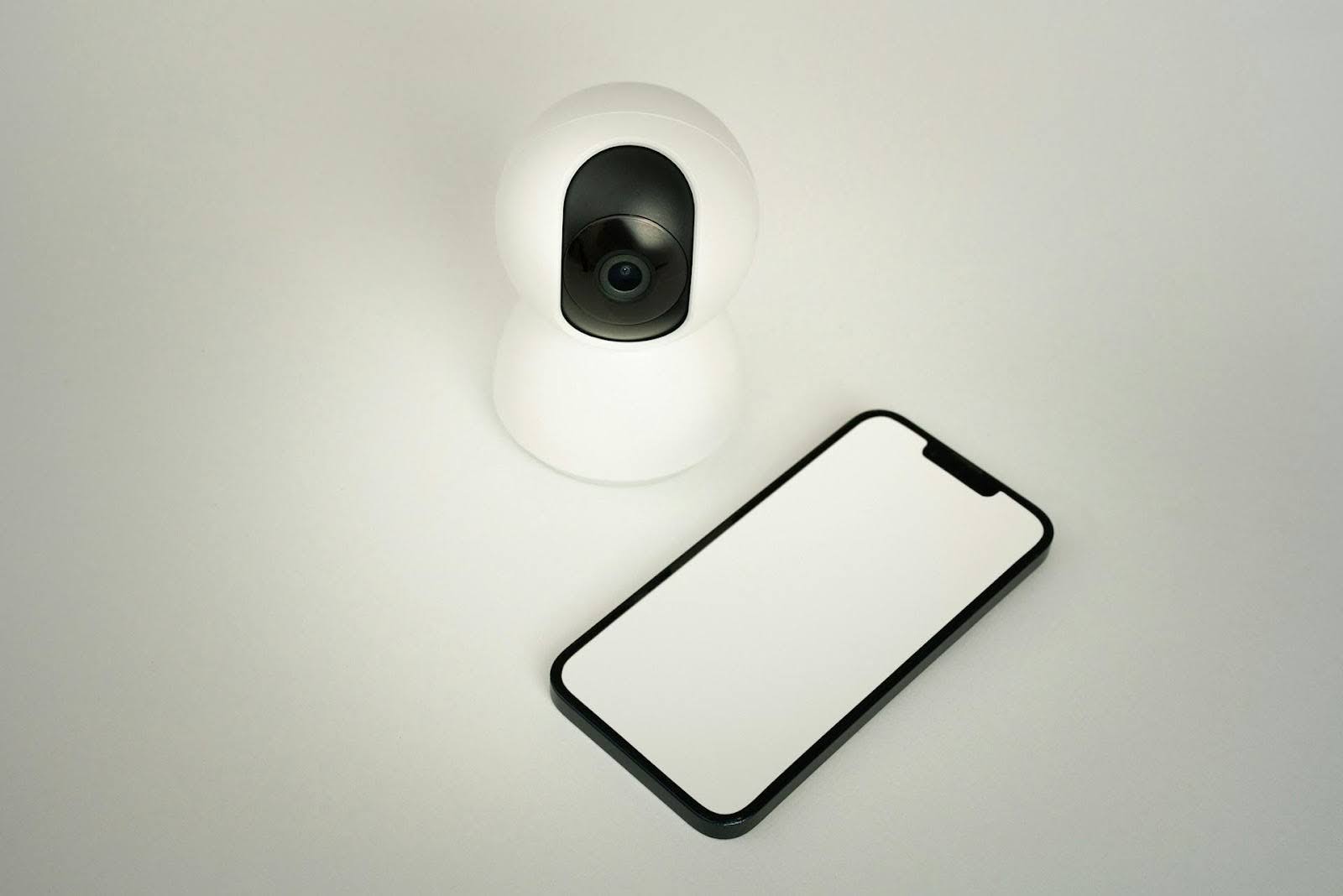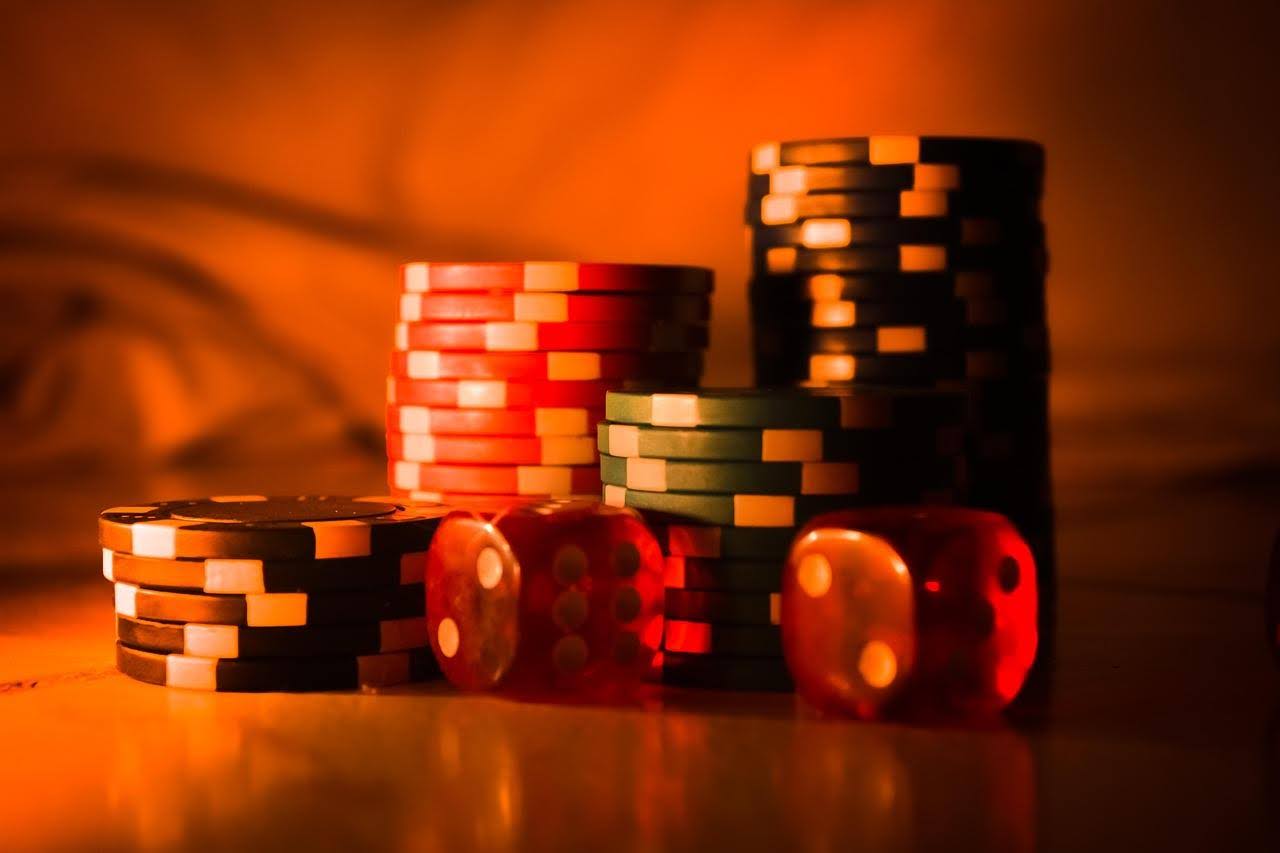What Is a Buy-in in Poker? Detailed Explanations From Experts
Are you a poker enthusiast looking to understand the concept of "buy-in" in the game? Whether you're a beginner or a seasoned player, understanding the buy-in process is essential for a successful poker experience.
In this article, we delve into the world of poker buy-ins, explaining what they are and why they matter. Gain a deeper insight into this fundamental aspect of poker, and enhance your understanding of the game.
What is Buy-In in Poker?
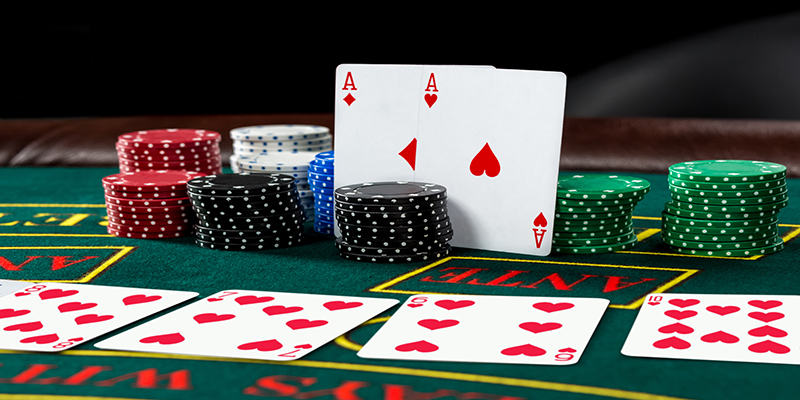
A buy-in is the amount of money a player swaps for chips when they sit at a poker table for the first time. This money is traded for tournament chips in a tournament and is not redeemable for cash. In a regular cash game, money is traded for chips worth the same amount as the player.
"A poker buy-in is your ticket to the game, setting the stakes and determining your starting chips or cash"
Poker buy-ins and how much money you may initially deposit on the table and play with are typically governed by certain restrictions, which include:
No Limit Vs. Pot Limit Poker Games
Buy-ins are especially important in No Limit and Pot Limit games, as the pot size may grow dramatically in an instant, bringing large sums of money into the middle by showdown.
Buy-ins are less critical in Limit games since you are restricted to the amount of money you can stake throughout each round. Because of this, several poker venues provide limitless buy-in quantities for limited pot games.
Minimum and Maximum
Most cardrooms, both online and live, will have restrictions in place limiting the minimum and maximum quantity of chips you may bring to a table when you initially buy-in or rebuy. These are usually constant from stake to stake and are predicated on a set amount of big blinds. Regarding minimum buy-ins, most poker sites provide buy-ins ranging from 20 to 40 times the big blinds.
Conversely, the majority of poker venues, particularly online, offer a maximum buy-in of 100 the big blinds. No-limit games, in particular, frequently do this at their lower limits to avoid excessive bullying by the large stack at the table.
Consider a player who has $10,000 and is seated at a no-limit table while everyone else has $100. The player with $10,000 might simply move all-in on every hand before the flop, forcing the other players to play for their entire stake in any hand. Regardless of his cards, the vast stack will eventually win and take all of the other players' money.
In addition, if the game being played has a maximum buy-in, a player may never acquire chips in such a number that their entire chips exceed the maximum buy-in. They may win more chips than the maximum buy-in, but if they choose to purchase chips, they may only buy enough to raise their total to but not exceed the table's maximum buy-in.
Shortstack Vs. Deepstack
In complex poker games, you will frequently have the option of buying-in as a shortstack, typically 50bb, or deepstack, equivalent to or greater than 100bb.
When you play as a short stack, your implied chances will decrease dramatically post-flop since you will have less money to win when you put all of your money in. Because you'll usually be putting money in before the last communal card is dealt, volatility in your games may be higher as a short stack, meaning your short-term results can fluctuate when related to the chips you wagered in the hand when you got your money in.
Post-flop gameplay and talents will become much more apparent while playing a deeper-stacked game. The opportunity of winning larger pots increases, but so does the danger of losing more money. However, the variance is typically lower as more post-flop action is seen.
Three Ways To Decide How Much Should You Buy Into A Poker Game With
You now understand buy-in poker and its related concepts. However, the question is, how much you should buy-in to participate in a poker game. To solve this problem, you need to compare your case with the following factors.
Your Comfort Level
Although we often repeat this in the safe gambling codex, you need to remember before you buy-in that you should never play with more money than you can afford to lose or are comfortable losing.
For example, if you have some idle money to gamble, you can buy-in as much as you want. However, if this money is exhausted, you should never use the money for other necessary funds in your life, such as rent, bills, or school fees. your deposit to poker. That is simply going beyond your monetary comfort zone, and you will face many risks if you do so.
Moreover, if you want to learn about our safe gambling codex, check out our How to Gamble Safely article.
Your Bankroll
Even the best players will have losing streaks. In poker, you should be concerned with the long-term outcome. That being said, you will have to tolerate numerous ups and downs along the path.
As a result, keeping a separate poker bankroll is advised to determine which stakes you can afford to play and when you should go up or down the stake ladder. If you're just getting started with micro stakes online, the chart below can help.
Before you read the table, remember that 2NL refers to $0.01/$0.02 bets in terms of stakes. The "2" NL element always refers to a stake of 100 big blinds. As a result, 500NL would apply to stakes of $2/$5 (since 100 x $5 big blinds = $500).
| Stakes | Minimum Buy-in (~20bb) | Maximum Buy-in (~100bb) | Bankroll Requirements (~100bb Buy-ins) | |
| Safe (100 BI) | Aggressive (20 BI) | |||
| 2NL | $0.40 | $2.00 | $200 | $40 |
| 5NL | $1.00 | $5.00 | $500 | $100 |
| 10NL | $2.00 | $10.00 | $1000 | $200 |
| 25NL | $5.00 | $25.00 | $2500 | $500 |
| 50NL | $10.00 | $50.00 | $5000 | $1000 |
| 100NL | $20.00 | $100.00 | $10,000 | $2000 |
| 200NL | $40.00 | $200.00 | $20,000 | $4000 |
| 500NL | $100.00 | $500.00 | $50,000 | $10,000 |
| 1000NL | $200.00 | $1000.00 | $100,000 | $20,000 |
One more note for you, for games with a higher or unlimited maximum buy-in, you need to have even more buy-ins in your bankroll before you can afford to play in that game, solely to account for the possibility of significant swings and variance.
Skill Level of Your Opponents
After deciding the stake and game to play, the essential factor to consider for buy-in amount is your skill level in comparison to the other players in your game.
If you believe your talent exceeds that of the other participants, you should buy-in for the maximum money possible since you will maximize your winnings in the long term by defeating poorer players. For example, you may see that many sharks buy-in for the standard limit of 100 large blinds online to at least try to cover all of the other players in the game.
If you believe you are one of the weaker players at the table, buying in as a shortstack may be more appropriate.
Remember that you may always buy-in low to acquire a feel for your table, then top-up to the maximum if required.
Other Strategies For Poker Buy-Ins

Here are some other related issues you need to pay attention to before buying-in to join a poker table.
Never Going South
Going south is taking chips off the table and pocketing them to avoid losing them in future poker hands. In most cardrooms, this technique is frowned upon and forbidden. To general knowledge, this method is considered angel shooting, the unwritten poker rules that every poker player should avoid to show respect to the opponents.
Even if you leave with a particular stack and return to the same table later, most software will ask you to either buy in with the same amount you had before or wait a specified period of time, such as 30 minutes, before rebuying for a regular amount, which is anywhere between the minimum and maximum.
Topping Up / Re-Buying
If you go below the original maximum buy-in, you may always top up and add chips to your stack. Just be sure to do this whenever you're not participating in a poker game. However, remember that you can't add to your stack in the middle of a hand, only before or after.
Dealers can sometimes conduct rebuys for you and give you chips right away. Other times, there may be chip runners available to assist you with rebuys at the checkout. Another method is to keep a few larger denomination chips with you once you buy in to make re-buys easier and smoother.
Considering the Rake
When considering whether to buy in short or deep, always consider the rake. Many live cardrooms, and even some online, make it nearly hard to play successfully with a short stack since the rake consumes so much of your money whenever you win a pot. Consider a high rake of 10% up to $8 at 200NL. If you have a $40 stack and double up, you will only have a $72 stack after the rake.
That consumes 20% of your profits in only one hand. Compare that to doubling up with a maximum buy-in of $200. You'll now have $392, providing you with a good enough profit to stay in the black long-term and to some extent, beat the rake.
Relating Maximum Buy-Ins to Current Chip Stacks
Making a few early assumptions based on stack sizes might be necessary when selecting your seat and finding out who the excellent unknown players could be, as well as some weaker players. Considering shortstacks and deepstacks are frequently suggestive of your opponents' talent since most competent players want to maximize their earnings by covering weaker players by buying deepstacks.
If you notice any players with stacks that are double (or more) the maximum buy-in, this is probably a good player (or, in rare instances, a terrible player who may have been fortunate in a previous hand).
Tournament Buy-Ins
In tournaments, buy-ins are commonly denoted by two digits:
- One figure represents the portion of the buy-in that goes into the prize pool.
- Another figure indicates how much of the buy-in goes into the rake, staff gratuity, etc.
A $22 online tournament, for example, will most likely have a buy-in structure of $20+$2, which means that $20 of a player's buy-in will be donated to the main prize pool, and $2 will be paid in rake (tournament fees to the cardroom).
Multiple numbers may appear at times, such as in bounty tournaments. A $109 bounty tournament format may be $50+$50+$9 ($50 to prize pool, $50 bounty, $9 rake).
Read more: What is Poker GTO? Full Explanation from Experts
Conclusion
This article has provided a detailed and in-depth explanation of poker buy-ins, what they signify, how much is appropriate for you, and what considerations you should make and finally evaluate before placing your money on the table. In addition, if you have any questions about other topics in the world of gambling, our website offers a wide range of expert articles and explanations for your reference.








